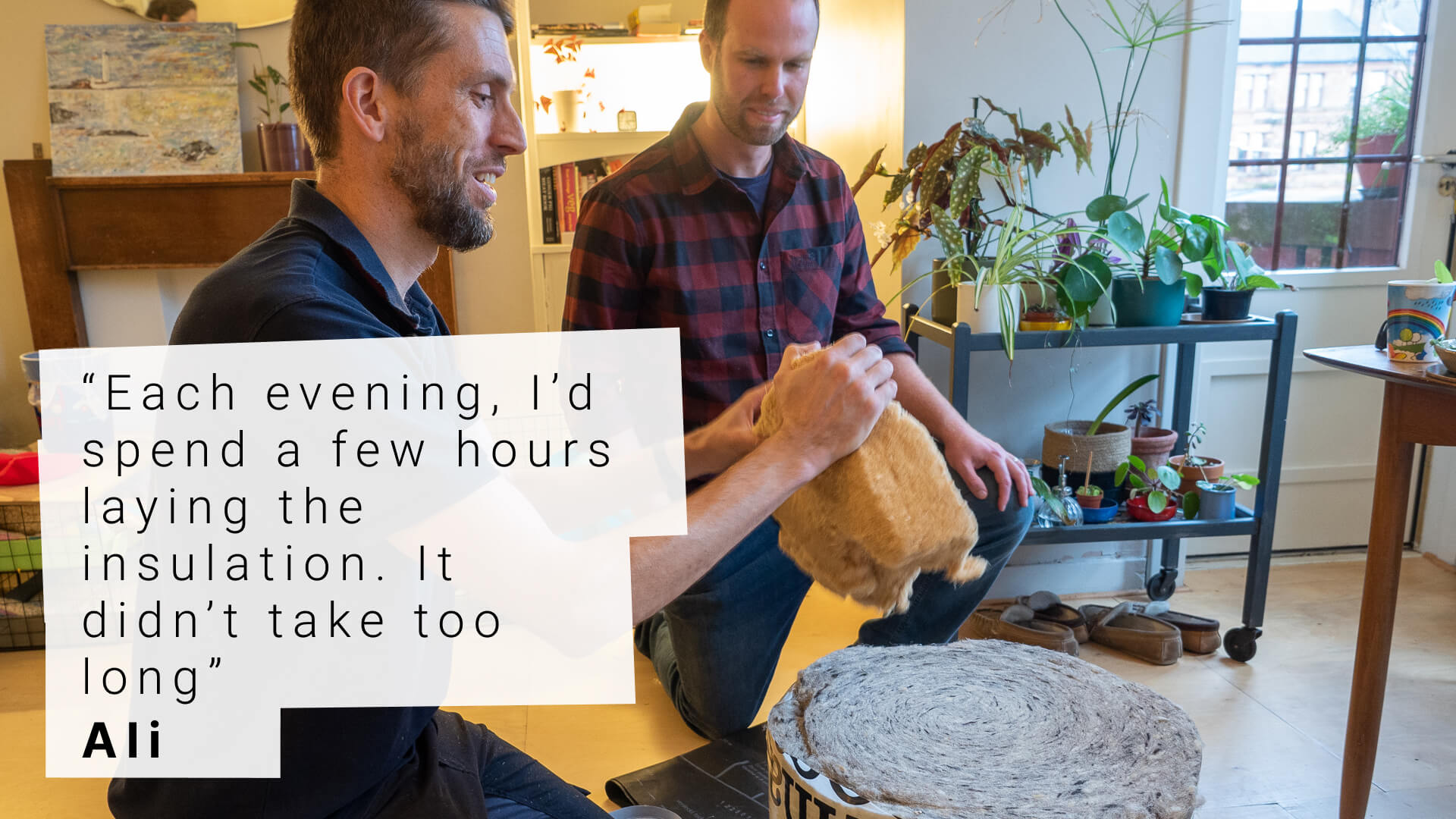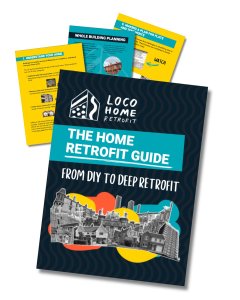
Preparation
Alistair and Jen bought their first home in September 2020 and began considering energy efficiency measures.
Jen’s work focuses on carbon emissions reduction, and Alistair was previously employed in low-carbon heating. “We’re happy to invest money in this sort of thing and don’t see it as money wasted,” says Alistair.
We’re happy to invest money in this sort of thing and don’t see it as money wasted,”
However, these plans coincided with the COVID pandemic and associated lockdowns. “Initially, getting people in or figuring out what to do was tricky. We had all these plans…we could do this, we could that, do we do internal wall insulation?” says Alistair.
Jen is a Senior Lecturer in Civil and Environmental Engineering at the University of Strathclyde and befriended Chris Carus [Co-founder and Executive Officer at Loco Home Retrofit], who proved to be a valuable source of knowledge and expertise.
Alistair adds: “I also had experience working in low-carbon heat – you could say I knew enough to be dangerous!”
getting started
First, the couple removed three large 1950s tile fireplaces. This stopped the draught from the chimneys and freed up space in three rooms.
Alistair and Jen then explored roof insulation. In the attic, they found “ten centimetres of stuff – like compressed newspapers,” says Alistair. He then spent the next four months digging out the old insulation, bagging it up and taking it to the tip.
“I was working a couple of evenings a week. There was ninety years of junk up there. For example, we removed about 200 meters of old electrical wires,” he says.
After clearing the attic, Alistair spent another couple of months laying 37 centimetres of sheep wool.
“It was expensive, but I chose sheep wool because it’s nice to work with,” he says. “I got 100 meters sq. Working with nice material was worth spending £2,000 extra. Each evening, I’d spend a few hours laying the insulation. It didn’t take too long,” he says.
“I also got a little thermal camera for my iPhone to see all the cold patches,” he adds.
Next, the couple followed Chris’s advice and replaced the windows. “We got nice sash UPVC (Unplasticised Polyvinyl Chloride) windows put in. They look great, and we’re really happy with them.”
The replacement of 17 windows took three days and cost between £8,000 and £9,000. The couple had investigated funding but could not find any for the work they wished to carry out.

Next steps
The couple replaced their single-panel radiators with double ones and installed a triple-panel radiator in their bedroom.
“Chris did the calculations for us,” says Alistair. “We went further than the gas fitter suggested, so that was good. They’re now running at 40 degrees Celsius, pretty much heat pump temperature.”
The couple found that the gas engineers – recommended by their neighbours – didn’t fully understand why they wanted a low-heat system and needed guidance. “They’re used to people cranking it up,” says Alistair. The couple got Chris in as a consultant and then acted as project managers for the radiator work.
Further energy-efficient measures included draught proofing the letterbox and keyhole. “That made a big difference,” says Alistair. There had always been a constant draught by the front door.”
“You can go to town on draughts,” says Alistair. “We were worried about humidity, but we’ve pretty much plugged up everywhere we can and have been monitoring humidity.”
“You can go to town on draughts. We were worried about humidity, but we’ve pretty much plugged up everywhere we can and have just been monitoring humidity.”
Each bedroom had vents, basically holes to the outside. Alistair filled them with spray foam. “We got a few cheap humidity meters and found it hadn’t made any difference to the humidity.”
The couple also discovered that the radiator return and out pipes to the boiler were touching, so they put insulation around one of them. Also, the pipes from the shower were not insulated at all.
“The shower was noticeably hotter after we insulated the pipes,” says Alistair. “We also installed a low-flow showerhead. The shower’s flow is now two-thirds of what it was.”
lessons learned
Alistair explains there is one drawback of taking on so many jobs yourself – the odd error.
“I drilled into a pipe,” says Alistair. “Our floors were originally nailed down. We had to lift them for the radiator work. I decided to screw them back down and got a bit too enthusiastic. That was £400 on an emergency plumber.”
In hindsight, the couple would also have chosen a different location for one of their bedroom radiators.
“I think Jen didn’t realise how chunky they’d be. When I was managing that part of it, I thought, it’s just a radiator, it’s fine, but actually because triples are wide, and it’s right there on the wall when you enter the room, we maybe should have got a longer double radiator, rather than a shorter triple” says Alistair.
Any future retrofitting projects would involve cooperation from the couple’s neighbours, such as external insulation on the rear of the building or installing a heat pump in the tenement.
The couple have considered installing extractor fans in the bathroom and kitchen, but again, as this would involve drilling through the outer stone, they’d need to check the regulations around this type of work.
“Through Loco Home, we’ve had a company recommended, and we’ve got quotes, so we’re working out the logistics,” says Alistair.
The couple has seen a reduction in their monthly bills. “The problem is that as we’ve done this, gas and electricity prices have spiked,” says Alistair. “But as far as we know, we’ve kept it quite low, so we’re happy with it.”
“For a 90-year-old, 100-metre sq flat, we’ve done pretty basic stuff that anyone could do with a bit of guidance, and we’ve got it to a pretty good place.”
We’ve done pretty basic stuff that anyone could do with a bit of guidance, and we’ve got it to a pretty good place.
Words by Scott Skinner

Make a plan
Loco Home’s Whole House Assessment services are helpful to anybody who is stuck with their retrofit or simply unsure where to start. To learn more, listen to Loco Home member Sarah Buchannan talk about her assessment on the Accelerate to Zero podcast, or click below.



